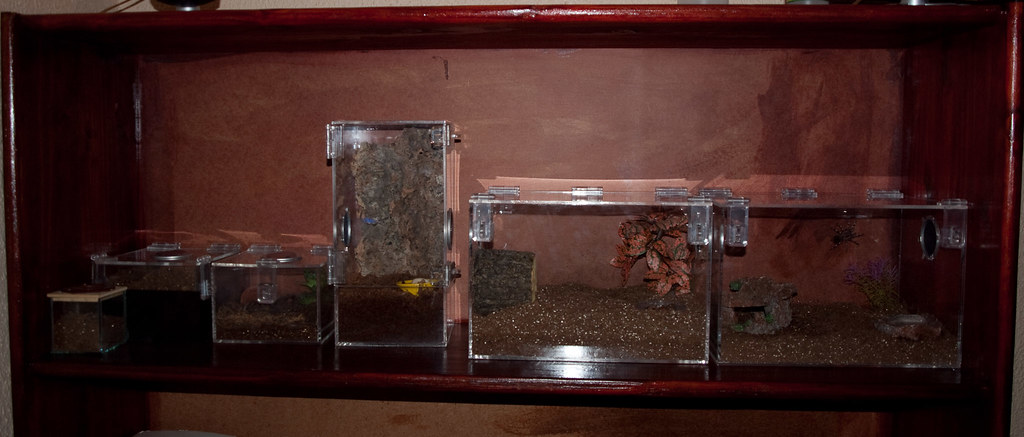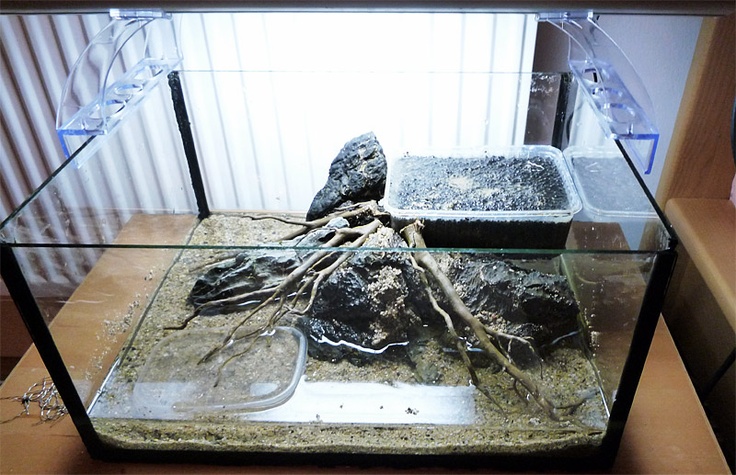- Messages
- 245
- Location
- Skopje, Macedonia
Hello there, and good evening everyone..
I am planning to build permanent enclousure for my Acanthoscurria Geniculata, so when she/he stop growing, i can put him/her there. To live a happy life..
I want to gather all usefull information on what i can and cannot put inside.. I have watched a lot of cool ideas.. I will share some images of what i am nearly think.
The matterial i would like to use for building it up is going to be Plexiglass, ( i dont know if thats the same as acrylic , dont know whats that either, i just keep seeing it a lot ).
Or maybe fish tank, with door from plexiglass.. But i am not sure about the glass, as i read somewhere here on the forum, that is hard to keep the humidity with glass. So i am going with the plexi i think.
I also want to put some real wood for the hide, and some fake plants that i am going to glue them. ( also can the glue be poisionous to the T ? ).
I dont know how to keep the wood from getting most on the wood, and to keep from growing life sources inside the tree.. I read somewhere to put the tree in the oven for 10 minutes or something..
So, anyone who can help me with tips and hints about what i can and cannot put inside my enclousure is going to be a big help for me.
I am going to start with setting up the enclousure in 3D Software, so i can share how is going, until i find the solution
Sorry for the long post
I am trying to combine this to types somehow..

with maybe this

or this

i think the last one is what iam looking for..
I am planning to build permanent enclousure for my Acanthoscurria Geniculata, so when she/he stop growing, i can put him/her there. To live a happy life..
I want to gather all usefull information on what i can and cannot put inside.. I have watched a lot of cool ideas.. I will share some images of what i am nearly think.
The matterial i would like to use for building it up is going to be Plexiglass, ( i dont know if thats the same as acrylic , dont know whats that either, i just keep seeing it a lot ).
Or maybe fish tank, with door from plexiglass.. But i am not sure about the glass, as i read somewhere here on the forum, that is hard to keep the humidity with glass. So i am going with the plexi i think.
I also want to put some real wood for the hide, and some fake plants that i am going to glue them. ( also can the glue be poisionous to the T ? ).
I dont know how to keep the wood from getting most on the wood, and to keep from growing life sources inside the tree.. I read somewhere to put the tree in the oven for 10 minutes or something..
So, anyone who can help me with tips and hints about what i can and cannot put inside my enclousure is going to be a big help for me.
I am going to start with setting up the enclousure in 3D Software, so i can share how is going, until i find the solution
Sorry for the long post
I am trying to combine this to types somehow..

with maybe this

or this
i think the last one is what iam looking for..

